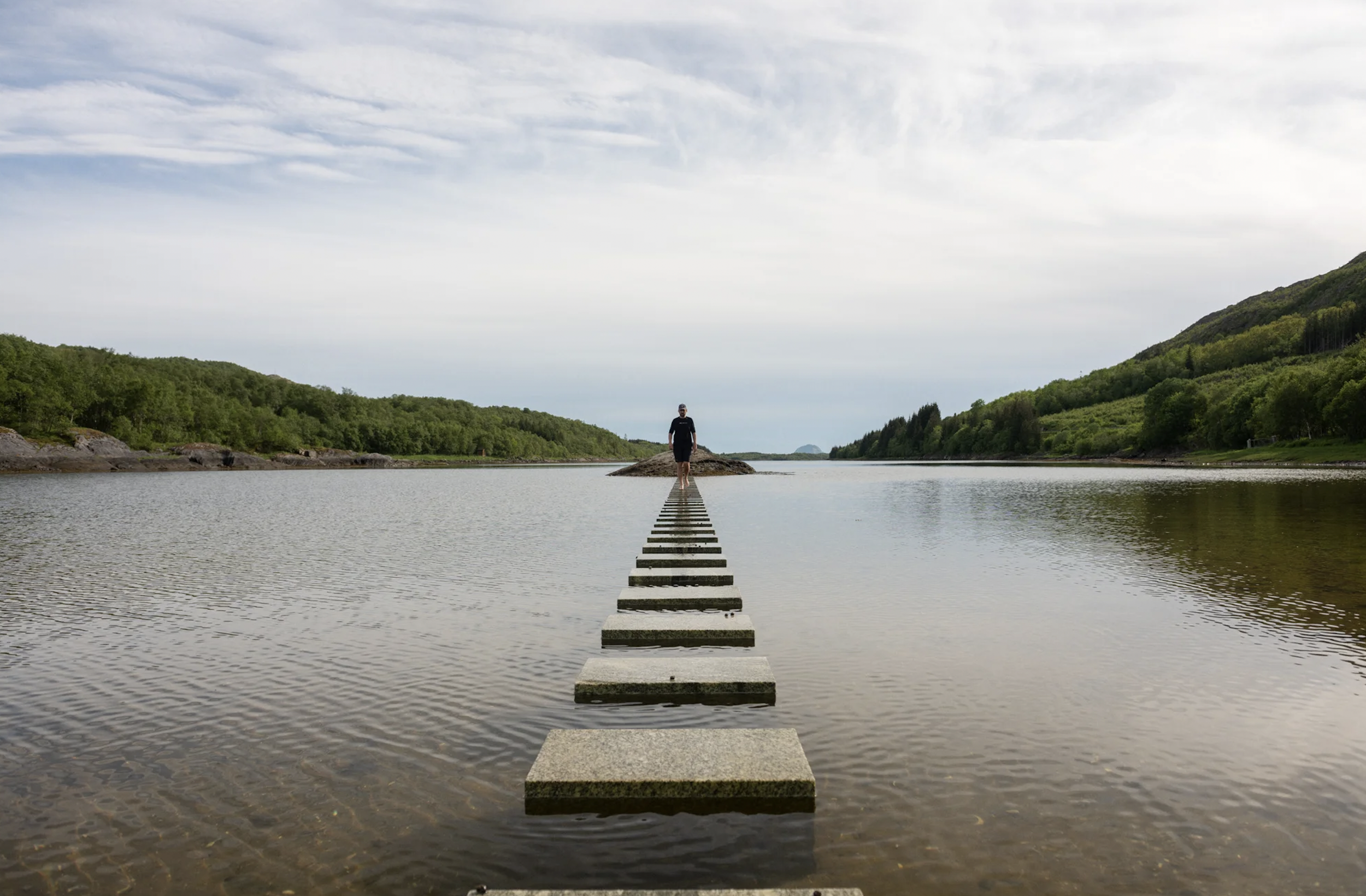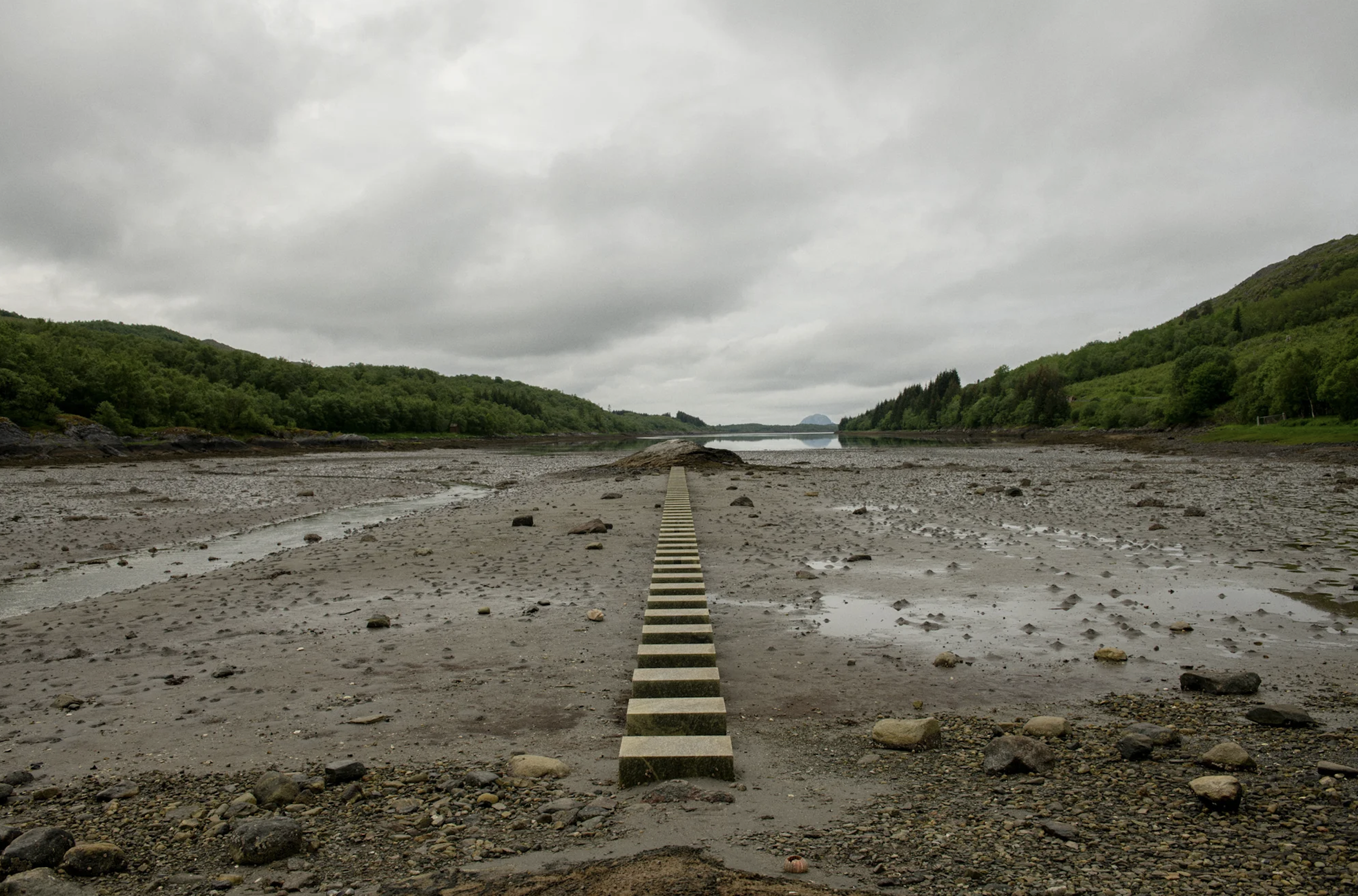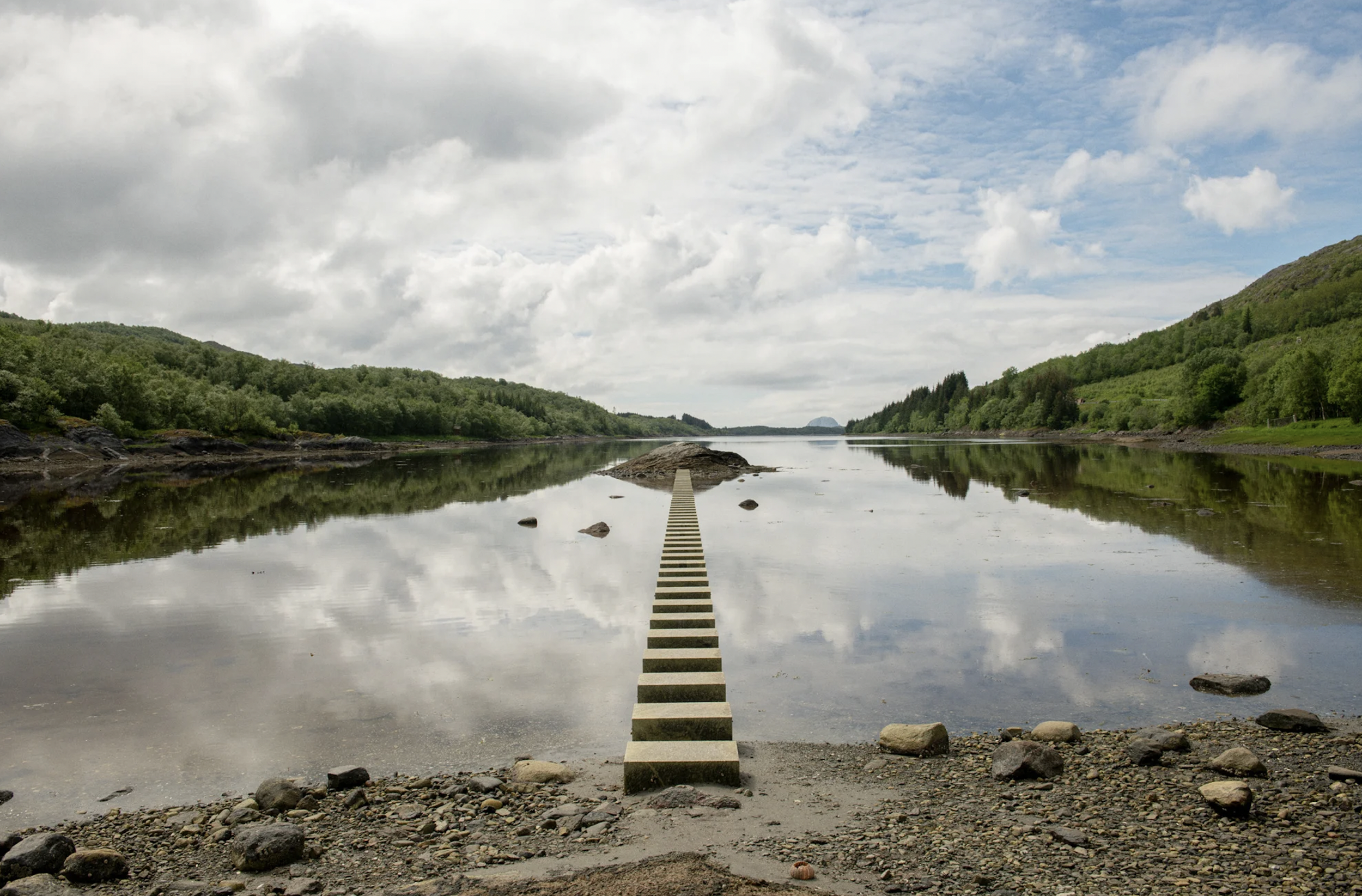Slowing down in Norway
A new tidal installation and rest area for travellers by Snøhetta encourages visitors to slow down and contemplate the passage of time.
Trælvikosen sits on the road between Namsos and Mosjøen in Norway, with the site part of the Norwegian Public Records Administration’s Norwegian Scenic Routes program.
Trælvikosen aims to encourage visitors to slow down.
Fifty-five stepping stones have been placed in a horizontal line towards the greater ocean, ending at a small islet. They are fully visible at low tide, and completely invisible at high tide.
“It offers a range of impressions, from the small details in the shore to the grand views, and in addition, invites for a deeper understanding of time itself and the ever-changing nature,” say Snøhetta. “As the tide retracts and advances, new details and perspectives are revealed, minute by minute, inch by inch.”
The site is part of the Norwegian Public Records Administration’s Norwegian Scenic Routes program.
Trælvikosen sits by a river estuary in the inner part of a fjord arm, slightly north of a small city named Brønnøysund. It is a geologically varied plot, with grassy boulders and a range of species on the exposed sandy bottom.
The bottom of Trælvikosen shows traces of snails moving across the ground, flounders, stones in unique formats and the river’s changing trajectory. The scenery is constantly changing throughout the day and as the tide rises, visitors experience different surroundings.
The fifty-five stepping stones have been placed in a horizontal line towards the greater ocean, ending at a small islet.
Trælvikosen is one of 11 new architectural projects installed as part of the Norwegian Scenic Route project series, an effort by the Norwegian Public Roads Administration to provide alternatives to main roads that run through unique landscapes. They have both made lesser-known areas more available to the public and created value for the tourism industry. Natural wonders are heightened by art, design, and architecture, offering visitors inspiring art amongst beautiful scenery.
The installation was tested for a full year by Snøhetta with four stones, and they came to the conclusion they needed crushed stone for stability. The tide gave the designers installation challenges, as there was only ever a 4-hour window before water overtook the site.
Trælvikosen sits by a river estuary in the inner part of a fjord arm.
Trælvikosen was planned to avoid unnecessary footprints or disturbances to the natural environment. Construction mats were used during the building phase for machines to get in and out as gently as possible. All topsoil has been returned to its original place, and the stepping stones were locally sourced, carved and processed by Evjen Granitt in Bodø before being transported to the site by boat.
Landscape architect Thea Hartmann Kvamme argues that, “if we truly want to take better care of our nature, we also need more people to see and learn more about it. At Trælvikosen, we wanted to intentionally design the site to ensure visitors were enticed to stay longer than normal. To truly experience the details, the time and nature itself, and hence also understand it better, as it offers an opportunity to observe the ever-changing rhythms of our nature.”





